
Бесплатный фрагмент - Archaeology of the Indo-European Fatherland
Introduction
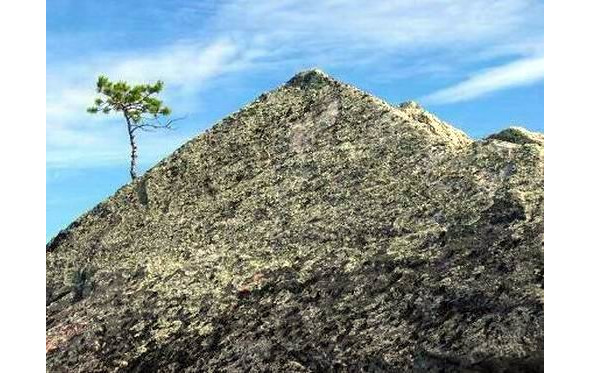
Russia is a country of eternal change and is completely not conservative, and a country beyond conservative customs, where historical times live, and do not part with rituals and ideas. The Russians are not a young people, but the old ones — like the Chinese. They are very old, ancient, conservatively preserved all the oldest and do not refuse it. In their language, their superstition, their disposition, etc., you can study the most ancient times.
Victor von Hyun. 1870.
The book of outstanding researchers S. V. Zharnikova and A. G. Vinogradov «Archeology of the Indo-European Fatherland» is devoted to the study of the ancestral home of the Indo-European peoples and is dedicated to the archeology of the ancestral home of the Indo-European. The origin of their rites and traditions. The book was written in 1989—90 but could not be published in Russia. Over the past time, additional materials have appeared that confirm the opinion of the authors. The book includes an archaeological atlas of the Indo-European fatherland.
In the modern world, the urgency of the problems of the ethnic history of the peoples of various regions of our planet is obvious. The growth of ethnic self-awareness, which has been observed everywhere in recent decades, is accompanied by an increase in interest in the historical past of peoples, in the transformations that each of them experienced during its many thousand-year-old formation. It became a spiritual need for a representative of a modern urbanized society to find the roots of his ethnic existence, to understand the diverse processes that led to the formation of that ethnocultural environment through which he perceives the world around him.
Since the origin and historical existence of the overwhelming majority of the peoples of our planet was associated with numerous migrations, shifts to new territories, causing changes in a number of cultural factors, both among the alien people and the indigenous population, today, studying the ethnic history and culture of people, we, of course, study them in the process of historical transformations and mutual influences of many tribes and peoples, to one extent or another took part in their formation.
Regional ethnohistorical research in our time is becoming especially acute, since it is knowledge of the history of one’s own people that helps a modern person to free himself from the narrowness of the nationalist view of the world, to understand the role and significance of the contribution to the common treasury of human culture of all peoples, to realize that humanity is one. Of course, it is impossible to solve the most difficult issues of ethnic history today without involving data from the most diverse fields of science.
It is necessary to combine the efforts of ethnographers, historians, archaeologists, linguists, folklorists, anthropologists, art historians, as well as paleobotanists, paleozoologists, paleoclimatologists and geomorphologists, since the development and formation of peoples took place in certain climatic zones, in certain landscapes, with a certain flora and fauna, and this must be taken into account. Only if the questions posed by ethnic history will be given mutually supportive answers by all of the above branches of science, we can, with a certain amount of confidence, believe that we are close to a true understanding of a particular stage of the historical process.
Therefore, at present, the search for an answer to any of the questions of the ethnic history of peoples cannot be considered legitimate without involving data from related sciences. This book answers this question.
It was written in 1989—90. And since then could not be published in Russia.
Although over the past time additional materials have appeared that confirm the opinion of the authors, nevertheless, we decided not to make changes, and publish it in the form in which it was written 30 years ago.
Paleolithic
Among the many unresolved problems of the many thousand-year history of the peoples of Eurasia, one of the most interesting is the problem of the ancient history of the European North of our country of that distant time, in which we must look for the origins and roots of a peculiar and unique North Russian folk culture.
«The tale of the North is deep and captivating,» wrote Nikolai Konstantinovich Roerich. «The northern winds are cheerful and cheerful. The northern lakes are thoughtful. The northern rivers are silvery. The darkened forests are wise. The green hills are experienced. The gray stones in the circles are full of miracles. We are all looking for the beautiful Ancient Rus.»
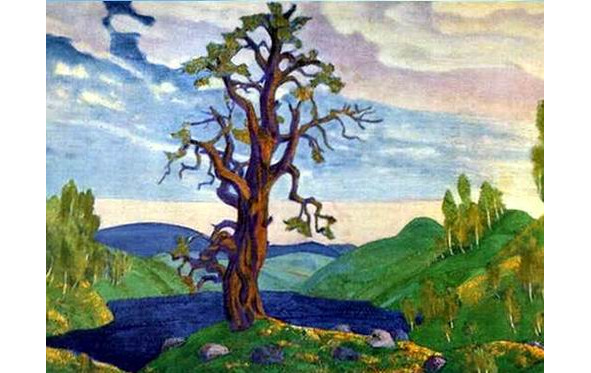
«The people do not remember that he would ever invent his mythology, his language, his laws, customs and rituals. All these national foundations have already deeply entered into his moral being, like life itself, which it has lived through for many prehistoric centuries, as past «on which the real order of things and the whole future development of life firmly rests. Therefore, all moral ideas for the people of the primitive age constitute its sacred tradition, great native antiquity, holy covenant of ancestors to descendants,» — these words of the outstanding Russian folklorist of the 19th century V. I. Buslaev, uttered by him at a ceremony in Moscow University in 1889, have not lost their relevance in our days.
Turning today to the infinite depths of folk memory, captured in legends and tales, traditions and conspiracies, in songs and rituals, in traditional art, we voluntarily or involuntarily plunge into the darkness of centuries and millennia, we are leaving at a distant time when all these cultural norms are still only nascent.
The prototypes of the characters depicted in the legends and the motives associated with them are formed already in the myth of the totemic ancestor, whose formation dates back to the Middle Paleolithic period, i.e. 100—50 thousand BC.
What time was it and what is it remarkable for the territory of the north of Eastern Europe?
O. Bader writes that during the «Mikulinsky» or «rice-Wurm» interglacial period characterized by a relatively warm climate, the first meeting of people with the Arctic Ocean in northeastern Europe probably took place. «All the locations of the Middle Paleolithic Mousterian implements stretched along the Western Urals, along the banks of the ancient Pra-Kama River (now Volga) from Volgograd to the mouths of Chusova, Obvi and Vishera, outlined the path that the ancients traveled, settling in Eastern Europe».
This conclusion seems quite logical in the light of the latest paleogeographic data, indicating that in the Mikulinsk interglacial (130—70 thousand BC) in the European north of our country there was no tundra at all, up to 65° N Spruce and birch forests spread with the participation of hornbeam and other broad-leaved species, up to 60° N. came mixed broad-leaved forests of hornbeam, linden, oak and spruce. To the far north along the western tip of the Northern and Subpolar Urals at that distant time a wide strip of birch and coniferous forests with the participation of oak and elm extended. The average winter temperatures in northern Europe were then significantly higher than modern ones: in Scandinavia by 7°, and in the northeast of the Russian Plain by 7—8° and even 11°.
Paleogeographers, soil scientists, paleoclimatologists came to the conclusion that «130—70 thousand years ago the conditions typical for the western Atlantic regions of Europe were distributed to Eastern Europe. The differences in the climate of Western Europe today and the Mikulinsk interglacial, in contrast from Eastern Europe, were small.»
And even more than that, in the Mediterranean-Black Sea strip at some points in winter temperatures were 1—2° lower than in our time. «The warm Arctic of the Mikulinsk interglacial, when January temperatures were 4—8° C higher than modern, suggests that the flow of warm waters of the Gulf Stream at that time was much more powerful than now (with a higher temperature),» — the authors of the atlas — monographs «Paleography of Europe for the last hundred thousand years.»
They note that for the White Sea region (within the eastern part of the North European archipelago), interglacial forests were characterized by pine forests, then mixed birch forests with spruce and broad-leaved species, and at the end of the interglacial period, birch forests prevailed. During the Mikulinsk interglacial period, up to approximately 60° N, and up to 57° N in the basin of the upper reaches of the Northern Dvina and Vyatka, birch and spruce forests were widespread with a greater or lesser participation of oak, hornbeam, and elm.
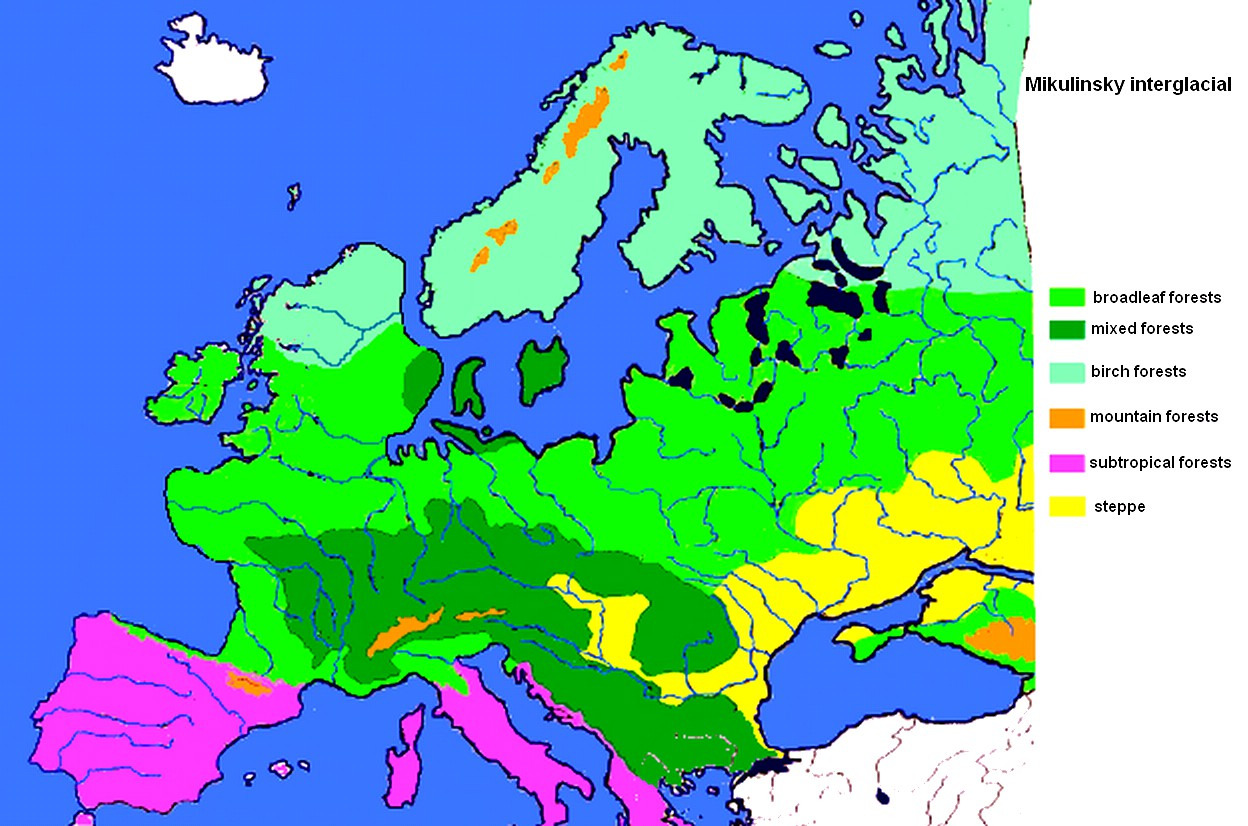
Therefore, there is nothing unrealistic in the development by the ancient human collectives of the north of Eastern Europe already in Mousterian time.
Archaeologists believe that people lived on the Pechora River (the Krutaya Gora site) 70 millennia ago.
Moreover, «primitive archeology now has massive and indisputable materials proving a long history of agriculture, which began at least from the end of the Middle Paleolithic era,» i.e. archaeologists determine the time of the birth of primitive agriculture, which is three or four tens of millennia away from us. For its occurrence in the rate of gathering, the necessary condition was the presence of mixed grasses and grass steppes. And those were not only in the traditional zone —
in the south of the Russian Plain, but also in the north, where for the time it was 45210 +1430 BP pine-birch forests with grassy meadow cover in the Vychegda and Pechora rivers basin. 44 the millennium BC is the time of new, compared with the very warm Mikulinsk interglacial, climatic conditions — the Mologo-Shekshninsk interglacial.
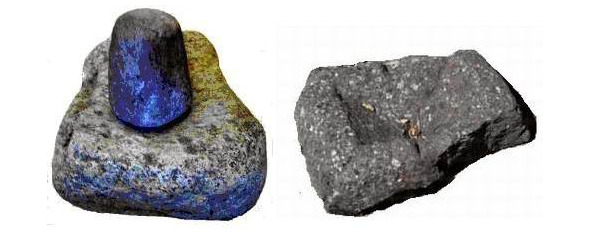
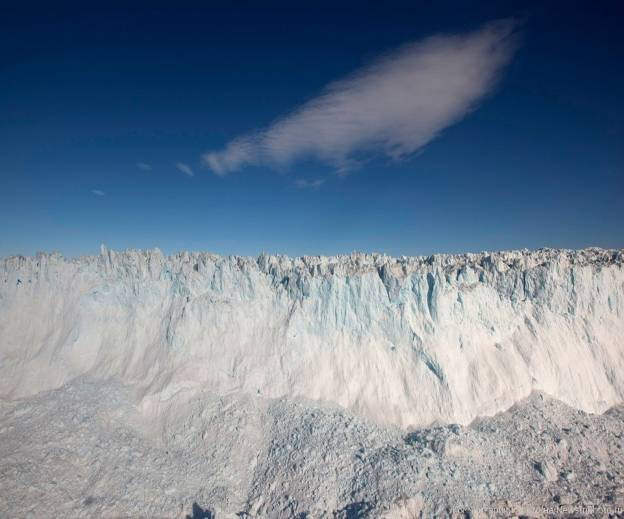
About 70 thousand years ago, the Mikulinsk or Rice-Wurm interglacial, which lasted about 60 thousand years, ended. The next ice age began, which was called Valdai in Eastern Europe.
Valdai glaciation — the name is very conditional, because this entire period is divided into two unequal parts: 70—24 thousand years ago — the iceless Valdai and 24—9.4 thousand years ago — the glacial Valdai. During the Ice-free Valdai, a slower increase in cooling alternated with periods of warming.
One of such warmings, very long, was the Mologo-Sheksna interglacial period, which continued with short cooling periods from 50 thousand to 24 thousand to the present day, and the time from 32 to 24 thousand years ago was the warmest. So, broad-leaved forests spread to the Don, the so-called Kostenko-Streletsk Paleolithic culture develops here, part of the population of which during the Milk-Sheksna interglacial period moved along the Russian plain to the Oka basin. A number of archaeologists suggest that the tribes of Streletsk culture at this time inhabit the banks of the Pechery.
Researchers note that: «In the northeast of Europe, which includes the vast expanses of the Volga and Ural regions, outstanding monuments of the early Paleolithic period have been found in recent years, and there has already been a turning point in the direction of intensifying work to study them. Some areas of the Russian Plain (north-west) in the Sheksninsk time may not have been populated. It should be emphasized that from the south to the north of the Russian Plain, at the time of the formation and development of the Upper Paleolithic, not nomadic nomadic hunters moved, but tribes leading a settled lifestyle, building long-term dwellings of various types, conducting complex household chores based on hunting and gathering. Hunting herds of horses and reindeer required the improvement of throwing weapons and, probably, led at such an early time to the invention of bows and arrows. In the same period, a spiritual culture develops and develops.»
Archaeological sites of the Paleolithic spiritual culture have been preserved in places of prolonged residence of people. Apparently, in the near future on the territory of the Russian Plain and, in particular, the Russian North, first-class monuments dating to the time of the Mologo-Sheksna Interstadial, the warmest time of the Valdai glacier, will be opened. In Poland and Germany, all the monuments of the ancient Stone Age are concentrated south of the 52nd parallel in the basin of the upper Vistula and in the Silesian Mountains. In Eastern Europe, they are distributed unevenly. In the western part, such monuments can be traced only to 52 parallel. In the central part of the Russian Plain, Mousterian monuments are known up to 54 parallels, and the Upper Paleolithic Buzovaya site (in the middle reaches of the Pechora River) is located north of 64° N, about 175 km.
from the Arctic Circle. Her age is 25450+380 years ago, the Sungir site on the Klyazma River is just north of 56° N. — her age is 25500 +200 years ago. In addition, by the 24th millennium BC such sites of the northeast of the Russian Plain include the Bear Cave in the upper reaches of the Pechora River, Ostrovskaya Station, Smirnovskaya and Buranovskaya Caves. In the northwest, monuments of this time are unknown.
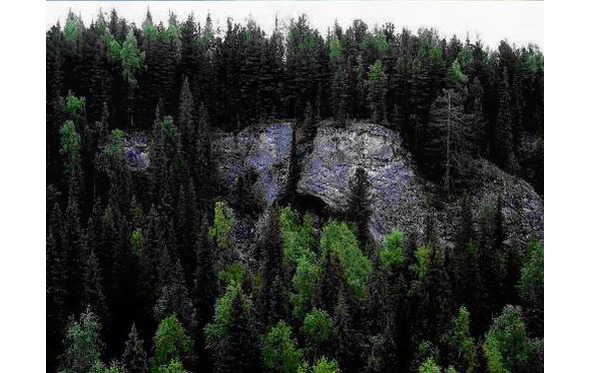
Cultural traditions prevailing among the population of the northern part of the Russian Plain of that distant time, very well represented by the graves of the Sungir site near the city of Vladimir, dating to the end of the Molozhsko-Sheksninsk time. Here, observing a long-established ritual, people who lived in the 24th millennium BC, before burying their dead, sprinkled the bottom of the grave with hot coals, cleansing it, possibly with the remnants of trizny. Then chalk or another white substance, similar to lime, was strewn to the bottom, and already over a white layer, densely sprinkled with red ocher. White and red — the symbols of purity and blood, snow and fire were already at that distant time, escorting a person to another world. The deceased were put into the grave in richly decorated clothes, with numerous stone and bone tools and weapons; they were covered with fur cloaks and plentifully covered with red ocher. So in Sungir in one of the graves was buried a tall, broad-shouldered man 55—56 years old, lying on his back with his hands folded on his stomach, his head was turned to the northeast. He was wearing a suede or fur shirt, leather pants and leather shoes such as moccasins. All the clothes of this man are 24 millennia BC. It was embroidered with 3,500 beads carved from mammoth tusks. On his hands he wore more than 20 bracelets from thin, cut from mammoth tusks, plates, as well as bracelets from strung beads. The entire headdress was embroidered with beads and ended at the back of the head with arctic fangs. On the man’s shoulders lay a short fur cloak embroidered with larger beads. A girl of 7—8 years old and a boy of 12—13 years old were buried next to the man. Their burials were also accompanied by a huge number of mammoth bone products. Of particular interest are spears made from split and straightened tusks: 2 m. 42 cm in the boy and 1 m. 66 cm in the girl. Today it is not yet clear how our distant ancestors straightened and split the three-meter tusks, how long, straight; hard and sharp spears were trimmed. Children’s clothes were embroidered with beads even richer than the clothes of men. A total of about 7,500 beads were sewn on it, children wore bracelets, and mammoth bone rings. In addition, the clothes were decorated with elegant ornamented slotted discs, hair clips, fasteners.
Archaeologists suggest that the burial of children does not occur simultaneously with the funeral of an adult and was done much earlier. This indicates that this is not a random rich burial, but a stable tradition that has developed for a long time and has been preserved for millennia.
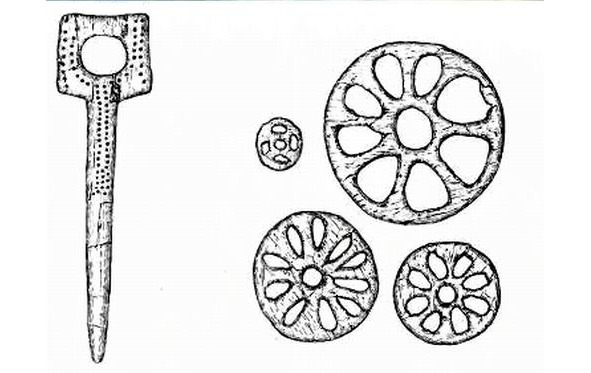
Abstract human thinking of the Upper Paleolithic of Eastern Europe was significantly developed, as evidenced not only by the burial of Sungiri, but also numerous ornamented crafts of that distant time, being highly exemplary Paleolithic art. So on the Don (Kostenki) on bone and flint products — female figures — as a rule, graphic depicted ribbon bands on the chest and waist. Of the elements of the ornament, an oblique cross is most often found. M. D. Gvozdover writes: «Obviously, this ornament should be considered the most characteristic of the Kostenkov culture, moreover, in other Paleolithic cultures, the rows of oblique crosses are almost unknown… The choice of ornament and its location on the subject is not caused by technological reasons or material… the nature of the arrangement of the elements of the ornament and their choice are caused not by technological reasons, but by cultural tradition… archaeological culture is characterized by both the elements of the ornament themselves and the type of their location on the ornamental field and the grouping of elements.»
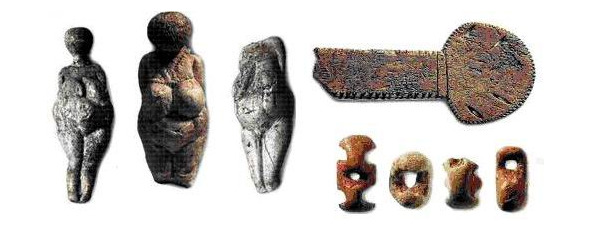
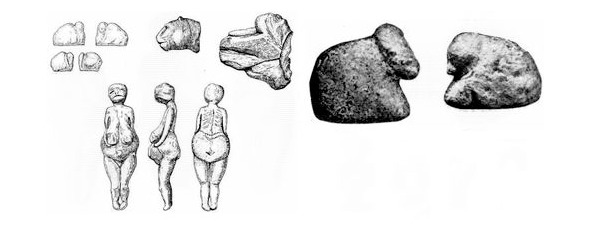
In the ancient Stone Age, for the first time on the products from mammoth tusks found in the Mezin site in the Chernihiv region (23 thousand BC), another type of ornament appears — the meander motif and swastika
.

An outstanding Russian researcher V. A. Gorodtsov wrote in 1926, analyzing the North Russian peasant weaving and embroidery: «Until recently, it was believed that the meander and the ovs are the fruits of the ancient art of Greece, and the swastika is the art of India, but all this turned out to be wrong, since it has been documented that the swastika, meander and ovs were the favorite motifs of the ornament of the most ancient centuries of the paleometallic (bronze) era, when maybe there were neither Greeks nor Indians hiding in the same Indo-European family, and when these motives managed to spread not only to all the continents of the Old World, but also infiltrate Central America. And this is not surprising, because the swastika and the meander of earlier and those times distant from us: they were found in Russia on the art of the Mezin Paleolithic site, whose time is far from us, according to geologists, for many tens of millennia. And in what amazingly developed form they are there! And what’s most surprising is that they contacted bird figures there, undoubtedly having the same cult religious significance as they have in our time, those the meaning of the symbol of the spring sun and related ideas about happiness, prosperity and joy. Thus, in a lovely complex of swastika signs, in the patterns of the North Russian skilled craftswomen, hiding reminiscence (living memory) of the most ancient universal religious symbols. And how fresh, what a solid memory!»
What was the initial model for the most complex rhombus-meander and swastika ornament Mezin still remains a mystery. Paleontologist V. I. Bibikova in 1965 suggested that the meander spiral, torn meander stripes and rhombuses on objects from the Mezin arose as a repetition of the natural pattern of mammoth tusks dentin. From this she concluded that a similar ornament for the people of the Upper Paleolithic was a kind of magical symbol of the mammoth, embodying (as the main object of hunting) their ideas about wealth, power and abundance.
I. G. Shovkoplyas, who published the materials of the Mezinsk site, notes that meander patterns characteristic of the monuments of this Upper Paleolithic culture, they have no direct analogies in the Paleolithic art of Europe and can be put «on a par with the perfect geometric ornament of later historical eras, for example, Neolithic and copper-bronze.»
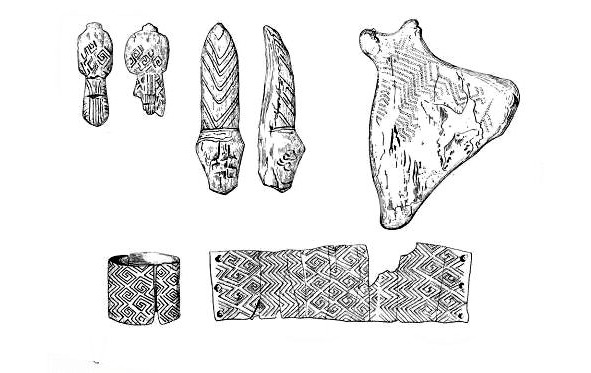
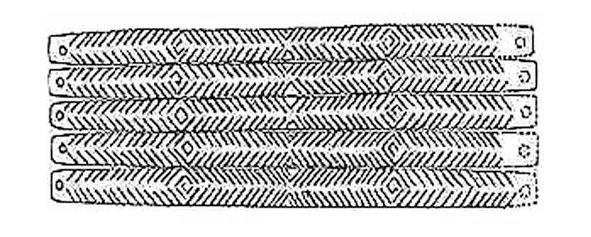
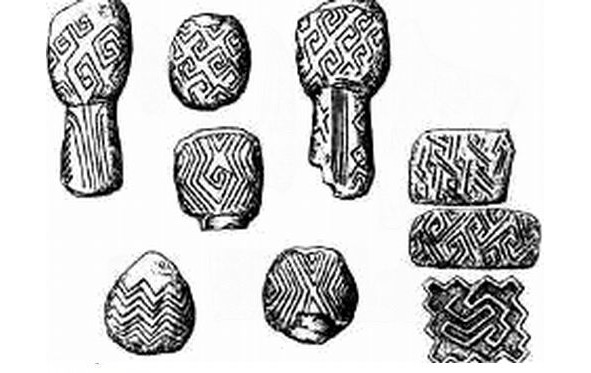
In the division of V. A. Gorodtsov, European Upper Paleolithic cultures of 25—20 thousand BC into three separate regions — Western European, Central European and Eastern European in the nature of art monuments, the basis for highlighting the Eastern European region was the unique geometric ornament of Mezin.
Thus, «our Mezin in the Chernihiv region is famous for the geometric meander ornament on the bone. In the remaining parts of the Old World, the meander appears only in the Bronze Age.» True, in connection with the origins of this ornamental motive, various researchers have developed very different points of view. It has already been noted above that V. I. Bibikova considers it possible to derive the Mezinsk meander and swastika from a repetition of the natural pattern of dentin of mammoth tusks. A. A. Formozov comes to the conclusion that: «the meander, characteristic of antique vase painting, the ancient Greek potters adopted from the weavers, and they only copied a pattern of threads that they obtained involuntarily in the manufacture of clothing. The Paleolithic hunters of Eastern Europe, not familiar with weaving, the meander appeared most likely as a result of the complication of zigzags, often engraved on their bones.»
It seems that it is difficult to agree with both the first and second assumptions of A. A. Formozov. The ancient Greek potters could also adopt another «thread weaving pattern», as soon as their weavers were so virtuoso that they received meander patterns in the structure of the fabric. After all, it’s impossible to get a meander by «involuntary» weaving of threads, for this you need to master the most sophisticated multi-piece weaving technique, so, probably, both the ancient weavers and the potters sought to decorate their products with a meander pattern not by chance, but quite consciously, connecting it with a certain complex of ancient representations. As for the Paleolithic hunters, they hunted mammoths not only in Eastern, but also in Western Europe, however, there are"zigzag complications,» also engraved on bone, did not happen.

Probably still closer to the truth B. A. Frolov, who, decoding the ornament of the Mezinsk bracelet, I came to the conclusion that the complex of the most complex representations of the Paleolithic man on the movement of time, on the change of seasons of the year, on the lunar calendar is reflected here those. We are not dealing with a simple imitation of a natural pattern and not with the «complication of zigzags», and with the complexity of thinking, with a complex worldview system.» He writes: «An analysis of the paleolithic graphics of Eurasia now indisputably shows: certain laws, a kind of «algorithms» for constructing the first ornaments really existed. The number of elements in the ornament groups, intervals between homogeneous groups repeat the cycles of the most frequent and visual cosmic phenomena for the inhabitants of the Earth, primarily associated with the movement of the sun and moon.» It should be noted that A. A. Formozov also believes that it was «with the development of the thinking of our ancestors who managed to move from a concrete-shaped perception of life to complex abstractions» that «a change in the face of art in the Neolithic and bronze» was connected, when the «true flowering survived the ornament».
The fact that the world of the Paleolithic man was much more complex and spiritually richer than we had previously imagined evidenced by the highly developed and specialized stone industry, and complex constructions of bone-sod houses, and thousands of drilled polished beads, spears and bracelets from mammoth tusks in the graves of Sungir, musical instruments and statues of Mezin and much more.
As noted earlier, already in the Upper Paleolithic we meet with a peculiar contrast of red and white: the whiteness of the bones was contrasted with the saturated color of the engraved ornaments worn by red ocher. In the graves of Sungir, the bottom was sprinkled with white matter (chalk or lime) and «already on the white layer of the grave densely showered with bright red ocher.
«Researchers noted what exactly red color played a huge role in cult rites and aesthetics of this period. Red dyes were used even in mustier (up to 50 thousand BC), and for a very long time there was a belief that ancient people used only natural dyes. As a result of research, it was found that by firing glandular nodules in different modes, red dyes of various shades were obtained already in the Upper Paleolithic.
N. D. Praslov writes: «… in general, it can be stated that more than 20 thousand years ago primitive people used a wide range of dyes, at least four primary colors: white, ocher, red and black. Especially rich colors are red paint.»
It should be noted that in the textile decor of many peoples of Eurasia, such a traditional combination of red and white survived to the 20th century. And this is especially characteristic of East Slavic ornamentation in general and North Russian, in particular. It is in such a strict and ancient red-white color scheme that the ornaments of «a charming complex of swastika signs in the patterns of North Russian skilled craftswomen» are made, in which, according to V. A. Gorodtsov, «a vivid memory of the most ancient universal symbols is hiding.» — the researcher exclaims. And this is not surprising. Having studied the Mezin Upper Paleolithic site, I. G. Shovkoplyas believed that the commonality of ornamental complexes indicates the affinity of the groups using these complexes. He believed that the population of Kostenki II on the Don, the Mezinsk site in the Dnieper and the East Siberian sites of Malta and Buret was closely related. He’s writing: «… a very distant resettlement of certain groups of East European Late Paleolithic population, possibly also originating from the Middle Dnieper basin (the Middle Dnieper ethnocultural region), probably, the location of Malta and Buret sites in Eastern Siberia should also be explained, extremely close and even identical in many manifestations of their material and spiritual culture (flint tools, bone products, character of dwellings, etc.) with sites of the Middle Dnieper basin, first of all with the same Mezinsk. Not excluded that the inhabitants of the sites of the
Mezin culture in the Middle Dnieper basin, on the one hand, and the named Siberian sites — on the other, had a common origin and even for some time constituted one population group at an early stage of their history. " 26 To the cited above, it should also be added that the inventory of the Upper Paleolithic Buzovaya site, located 175 km. from the Arctic Circle, which is 25—29 thousand years away from us, has much in common with the complex of the lower layer Kostenki I, 12 on the Don and dates back to the same time that, according to the conclusions of I. G. Shovkoplyas testifies to the genetic kinship of human groups that left these sites. At present, for most researchers, the population of the Urals at the end of the Mologo-Sheksna time seems indisputable.
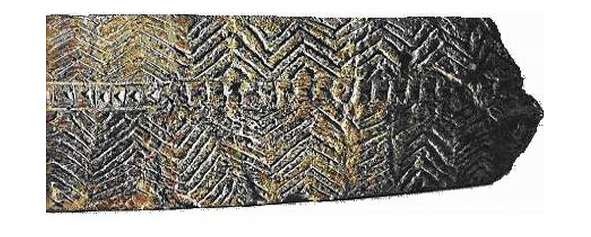
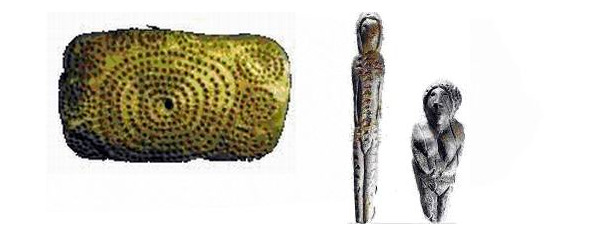
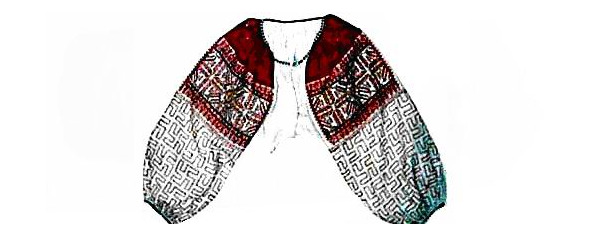
The exceptional development and perfection of the norms of ornaments, sculptures, relief’s dating back to this time convince that their roots should be sought in the more ancient Mousterian era, in that period of the Mikulinsk interglacial (130—70 thousand years ago), when human groups already mastered the Pechora basin and the coast of the Arctic Ocean and when the climate of the north of Eastern Europe did not differ from the modern climate of England and Southern Germany.
Ice sheet during the maximum stage of the Valdai glaciation The discovery in the last decades of first-class Paleolithic monuments in the north of the European part of our country (Bear Cave is located at 65° N), with lots of flint inventory and even wall painting, is an outstanding event.
It shows once again that in the ancient Stone Age human groups widely populated the north of Eastern Europe, those territories of the future Arkhangelsk, Vologda, Kostroma, Vyatka regions and the Komi Republic.The warm young Sheksninsky time was replaced about 20—18 millennia ago by a sharp cooling when the overgrown Scandinavian ice sheet reached its maximum development. The data of modern science indicate that the limit of the distribution of the Valdai glaciation went in the latitudinal direction from Vilnius to Smolensk, and then to the northwest to the Rybinsk Reservoir, Lake Kubensky and Nyandoma. Further to the northeast, the border is not reliably established.
At this time, in the territory of England and Ireland, free of glacier, stretched the tundra and subarctic meadows. Birch woodland (park tundra) was common in Western Europe, and the woodlands with birch and birch-pine forest stands occupied most of Central Europe and then a relatively narrow strip along the coast of the future Baltic Sea, and then Baltic glacial lake, to the northeast. Real forests or as they are called «typical forest boreal formations», in the western and middle parts of Europe at that time there were very few and they were mainly in the valleys of large rivers and intermontane basins.
Within the Russian plain, forests occupied, unlike Western Europe, a large area in the form of a wide strip crossing it in the direction from the southwest to the northeast. These were birch, pine, spruce and fir forests.
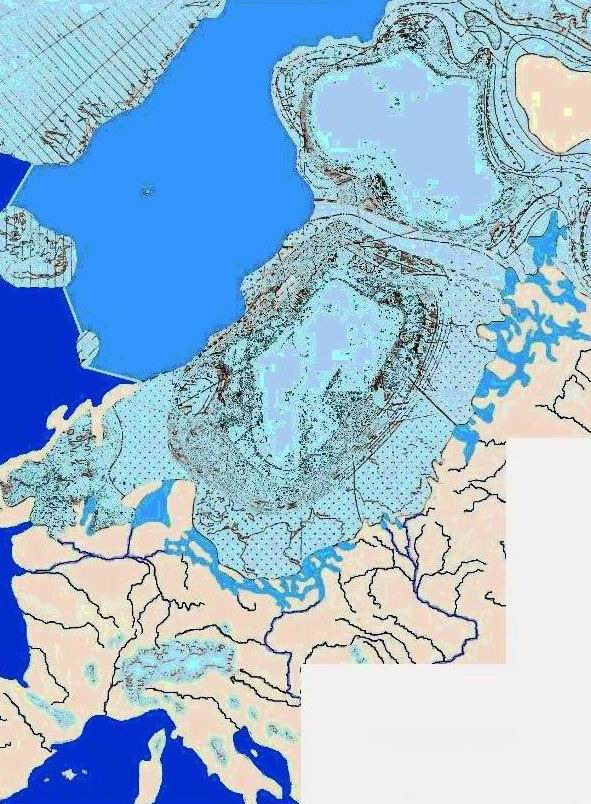
Paleogeographers note that: «in a number of areas there already existed forests with the participation of broad-leaved species such as oak and elm ...vegetation of the steppe type was widespread in the southern part of the Russian Plain. It is interesting to note that during the maximum of the Valdai glaciation, when almost the entire territory of England was covered with a glacier, and habitable sections were tundra and arctic meadows, primitive people and animals such as the wolf, cave bear, woolly rhinoceros, reindeer, bull and mammoth lived only 50 km. from the edge of the glacier. At the same time, meadow steppes with spruce-birch and pine forests were widespread in the Upper Volga basin. In the Oka basin, during the maximum glaciation, spruce-pine forests of the north-taiga type were noisy. In the area of the village of Pokrovskaya on the Puchka River (near Lake Kubensky, at 60°N), directly at the edge of the glacier, about 38 species of flowering and spore plants grew and the woodland consisted of birch, spruce, larch. Need to mark, that the actual tundra type of vegetation in Eastern Europe was a relatively narrow strip along the border of the Scandinavian ice sheet. But in Central Europe the tundra occupied, apparently, «the entire strip between the Scandinavian ice sheet in the north and the Alpine glacier in the south, and in the Atlantic part their distribution was even greater.»
If during the period of the maximum stage of the Valdai glaciation (20—18 thousand years ago) almost the entire territory of Western Europe, with the exception of the south-west of France, the upper reaches of the Danube and the foothills of the Eastern Carpathians, was occupied by subarctic meadows and tundra with birch and deciduous woodlands, then in Eastern Europe from the upper Dniester began a wide strip of meadow steppes with pine, deciduous and birch forests, passing through the Pripyat basin, Middle Dnieper, the middle course of the Oka. Expanding in the direction from southwest to northeast, in the northwest it reached the Upper Volga (in the Yaroslavl region) and the middle Vychegda in the north. The entire southeast of Eastern Europe at that time was occupied by cereal steppes, reaching in the northeast up to 55° N, in a number of areas there were forests with the participation of broad-leaved species such as oak and elm. Thus, plant zones were located in the submeridian direction, «sharply different from basically the breadth of zonality of the modern vegetation cover of Eurasia, „that“ can be considered as one of the most characteristic features of the nature of Europe in the era of glaciation.»
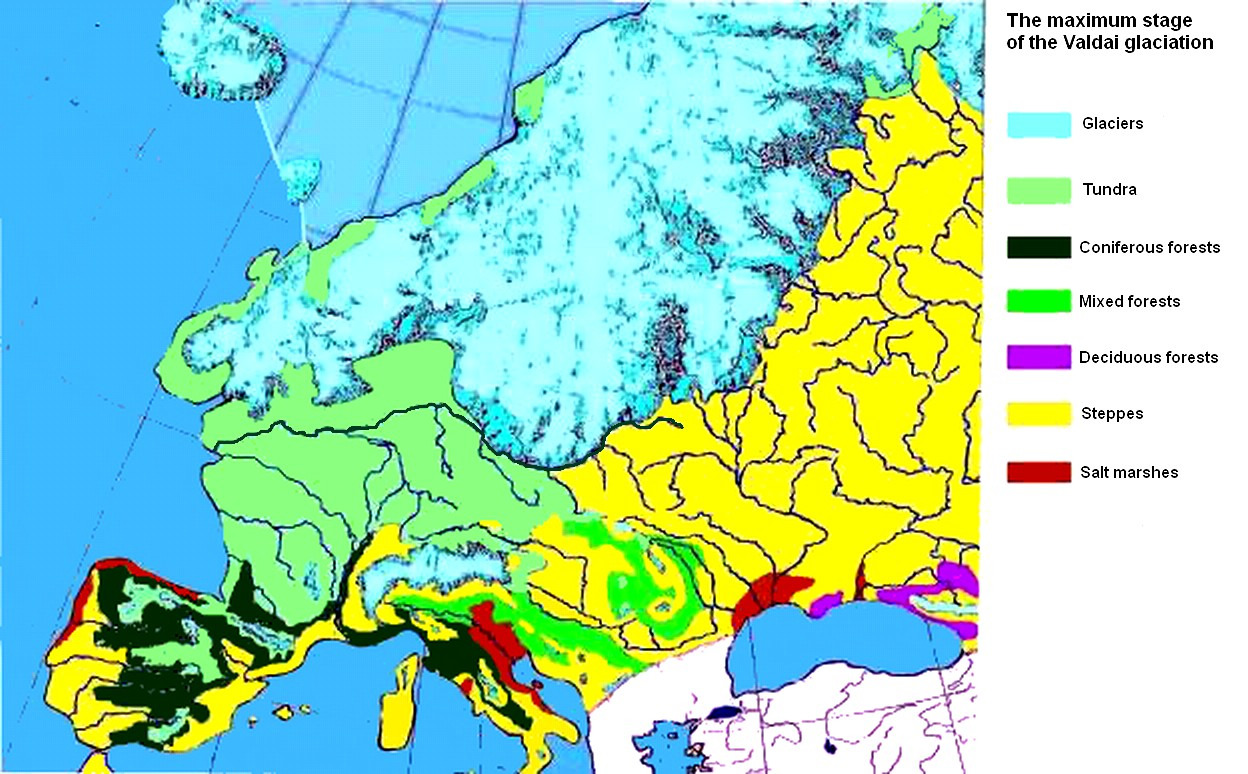
In most of the European territory of our country, there was no glacier during the maximum of the Valdai glaciation. And of course, in the presence of those natural conditions that existed then, it is unlikely that the population left these lands. Experts believe that during the peak of the Valdai glaciation during the period of the greatest cooling, the outflow of the population from the territories bordering the edge of the glacier went «south to the mountains, south-west to the territory of the Central Massif of France and along the Sudeten and Carpathians towards the Russian Plain», with its meadow steppes and forests, and hence with an abundance of food. However, it should be noted that the entire territory of the Baltic States, Northern Belarus, the North-West of Smolensk, Leningrad, Novgorod and a significant part of the Tver regions were covered with glacier and their settlement occurs only at the end of the Late Glacial, at the turn of the Paleolithic and Mesolithic. It remains to be assumed that with climate change worsening, and then with the advent of the glacier, the population who left these territories, to a large extent advanced to the east of the Russian Plain and the Urals, and part of it went to the Trans-Urals, to the lands of Western Siberia and further east, up to Altai. Maybe, it was then that the division of the unified boreal parent language into three independent branches occurred — the Early Indo- European language, which continued to develop in Eastern Europe, the Early Uralic language, which was formed in the Trans-Urals and early Altai language.
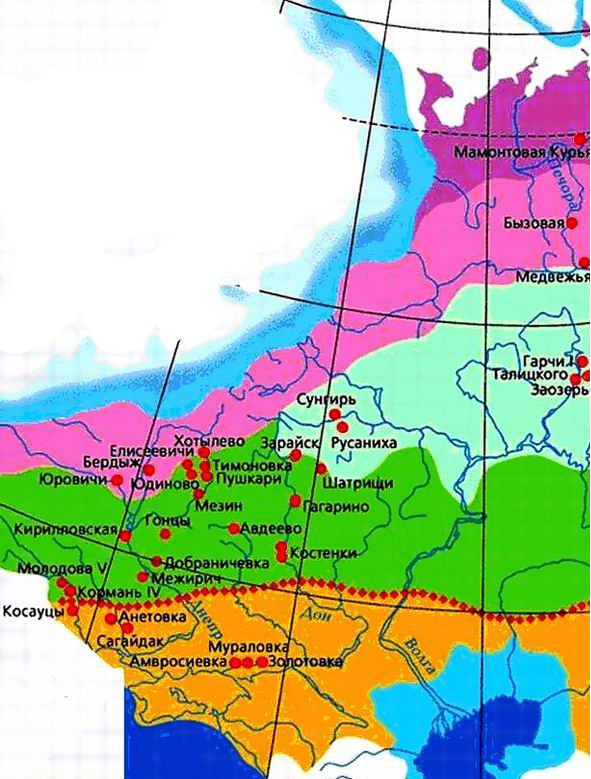
Mesolithic
About 13.5 — 13 thousand years ago, global warming began and 12 millennia ago, a new postglacial time begins — the Holocene. In the north of the European part of our country, its beginning was noted, as in Western Europe, by a transition zone, an important property of which was the presence of sharp climatic fluctuations: warming belling (12,400 — 12,000 years ago), cooling of the average Dryas (12,000 — 11,800 years ago), warming Allered (11,800 -11,000 years ago), cooling of the Late Dryas (11,000 — 10,300 years ago), Polovtsian warming (10,300
— 10,000 years ago), Pereyaslav cooling (10,000 — 9,500 years ago).
Already 11,900 — 10,300 years ago, summer temperatures in Europe were approaching modern. 31 This time was marked in Eastern Europe by a significant reduction in the area of the glacier. So already about 13600 years ago, the Klimetsky island on Lake Onega was abandoned by a glacier, and the Luga glacier zone was formed about 13,200—1,300 years ago. At 8 kb the eastern border of the glacier was on the border of Karelia and Finland.
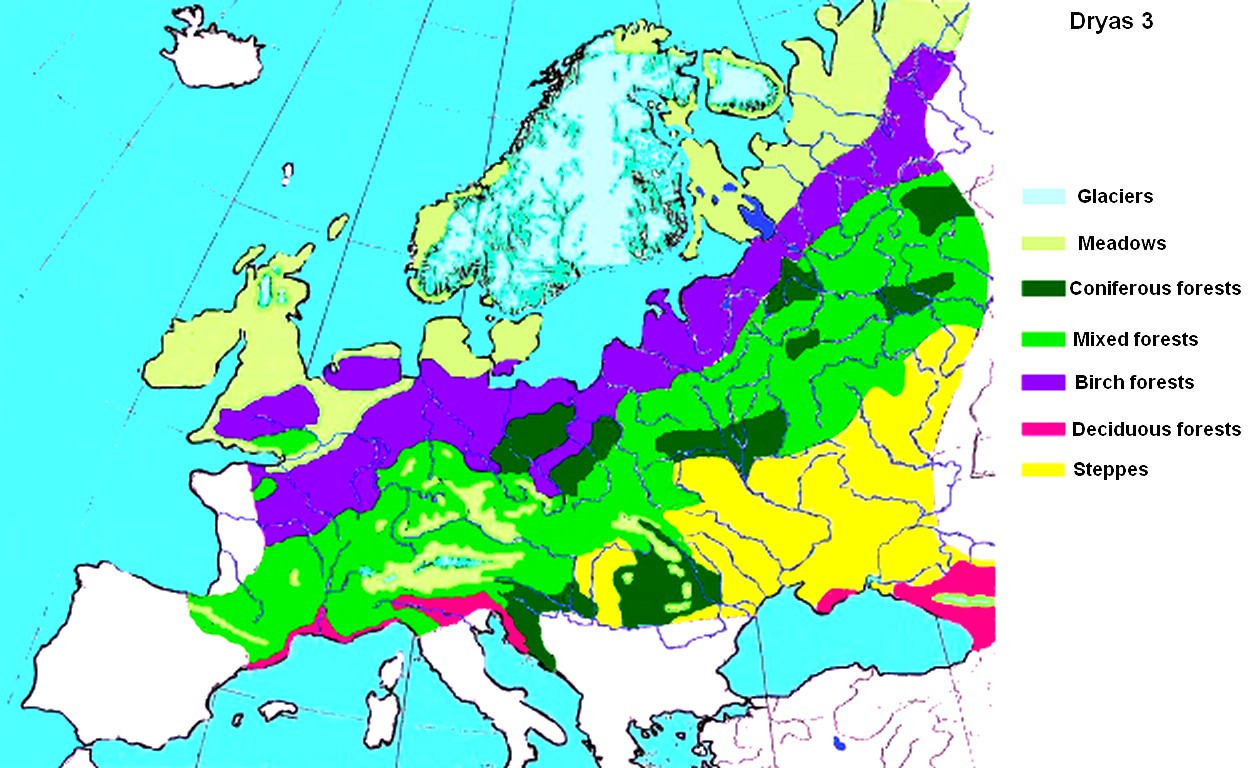
Subsequently, there was an increase in heat supply, up to the so-called Holocene climatic optimum, which came about 8 thousand years ago. Already 12
thousand years ago, on the site of the current swamps of the Yaroslavl and Leningrad regions, spruce, birch and pine forests grew and after 2—3 millennia — linden and elm. During the late glacial warming, birch, pine and spruce forests spread on the territory of the Russian Plain; in the south of the Pskov region there were thermophilic plants, for example, sea buckthorn. The White Sea has been freed from mainland ice and in the next millennium it was connected with the Barents Sea by two straits. In the north of the Pechora lowland 10—9 thousand years ago, woody vegetation developed the territory, moreover, «it was established that the degradation of the last ice sheet of the Pechersk Lowland, as well as of the entire north-east of the European territory of the USSR, occurred in an unusual way, fundamentally different from the degradation of the Scandinavian ice sheet.»
Researchers suggest that the destruction of the ice sheet was accompanied and may have been caused by processes of a seismic nature, catastrophic earthquakes. The Baltic is getting warm. On the island of Gotland over a period of time from 9700 to 9000 years ago, temperatures increased by 15° C, reaching modern values. Since the end of 7 thousand BC forests of the northern taiga appearance has advanced to the Barents Sea, the tundra on the continent has completely disappeared. In the place of modern middle taiga, southern taiga forests appeared with the participation of oak, elm, maple, and hazel. In relation to the current situation, the northern border of the middle taiga has advanced 450—550 km to the north. Broad-leaved forests in the west of the Russian Plain have grown to a strip width of 1200—1300 km. in the meridional direction. Dark coniferous spruce taiga occupied an area three times smaller than at present. Between 8,200 and 6,000 years ago, deciduous forests advanced south, and the zone of real steppes was limited only to a narrow strip of the Black Sea coast.
In the forest belt of Eastern Europe in the Holocene begins a new period of the Middle Stone Age or Mesolithic (10—5 thousand years BC) — the time of settlement and development of the northern and north-western territories. Ice liberation took place in many ways. Modern researchers suggest that there was an influx of population from the south-west from the Volga-Oka and Baltic-Dnieper regions.
This is not unexpected after all; people followed a long beaten path. Recall that analyzing the inventory of the Upper Paleolithic sites of the Dnieper (Mezin culture), Don (Kostenki), Siberia (Malta and Buret) and Pechora (Buzovaya site), the researchers suggested a genetic relationship between the human groups that left these sites. In addition, significant areas of the north of the Russian Plain, located between the eastern border of the glacier (Mologa blade) and the Ural Range, covered and at the peak of the glacier with mixed forests and meadow grass steppes, hardly abandoned by humans. In the Mesolithic era with improved climatic conditions, with the increase in the zone of broad-leaved forests, the population in these territories should naturally increase, because it is broad-leaved forests that «have high biological productivity and extremely favorable conditions for the extraction of plant and animal food».
During the Mesolithic, almost the entire territory of the Leningrad, Novgorod, Tver, Yaroslavl, Kostroma, Vologda regions, Karelia and a significant part of the Arkhangelsk region were in the subzone of deciduous forests.
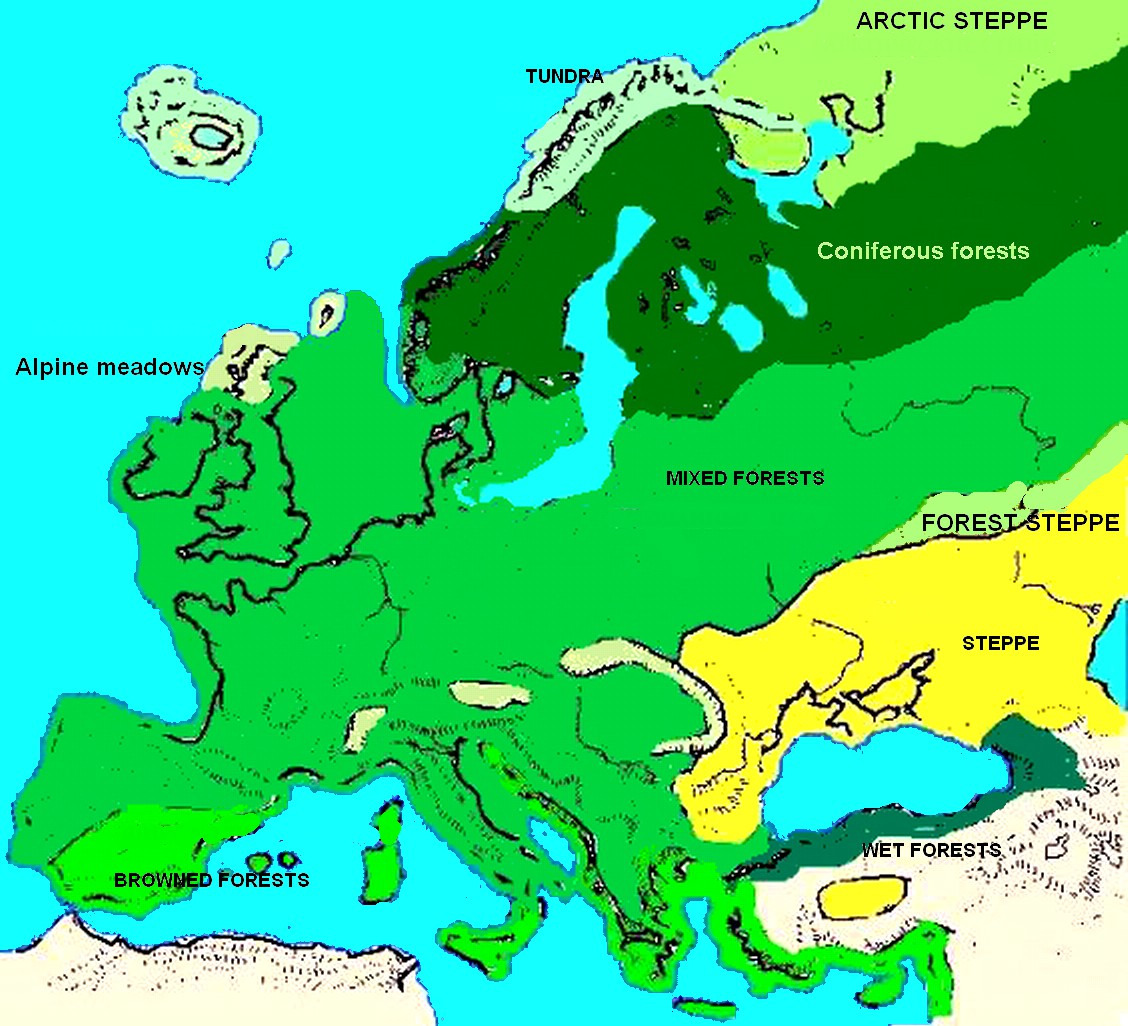
In the Mesolithic era, man develops the Arctic. A large number of sites of this time were identified in the basin of the Northern Dvina, Vychegda, Pechora.
Already 12—11 millennia ago, human groups mastered the Arctic coast of the Kola Peninsula. At the turn of 7—6 BC Mesolithic settlements appear in the West Siberian Arctic, in Taimyr, in the Lena, Indigirka and Kolyma basins. Mastering new territories, tribes or groups of tribes transferred their labor skills, cultural traditions, rituals and rituals that developed long before the Mesolithic period to great distances.
In the northern part of Eastern Europe, 8900—8300 years ago, «areas are distinguished that are separated by a line from the Kola Peninsula to the Urals, to a latitude of 60° N and further to Lake Baikal. To the north of this line during the indicated period it was warmer (in places more than 5° C), than now, south is colder.»
The same situation persists in the following time 4 — 3 thousand BC, when thermophilic vegetation has spread widely, and climate warming and mitigation «was not observed everywhere, but in a number of regions of the northern hemisphere, approximately between 45 and 70° north latitude, south was a relative cooling strip».
It was during this period, called the Atlantic, that a maximum of broad-leaved, which appear in the north of Eastern Europe already in the second half of the boreal, i.e. in 8 thousand BC.
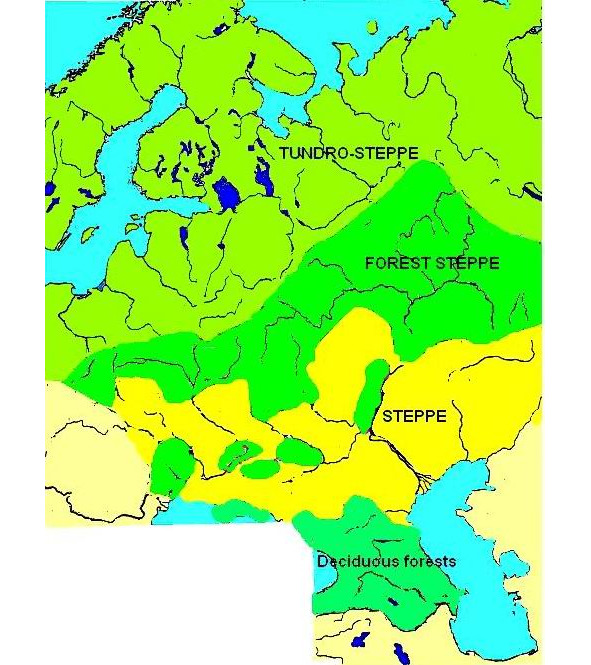
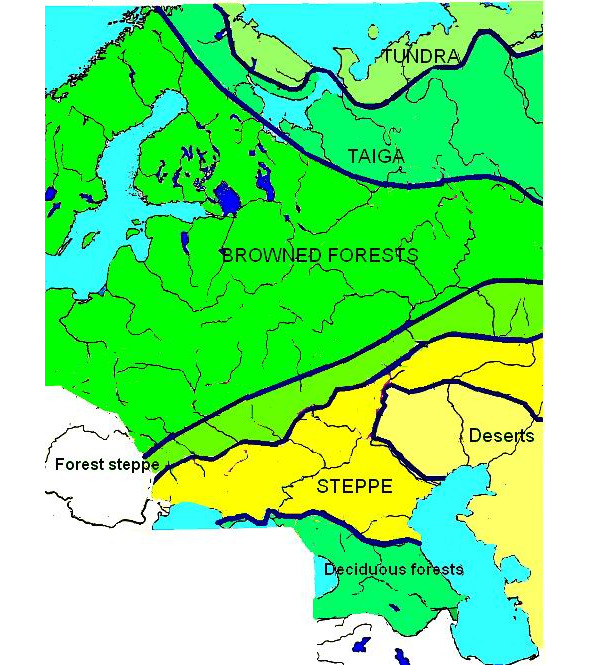
S. V. Oshibkina writes that: «Natural conditions, according to most researchers, were especially important in the early period of history, when they determined the economic activity of a person, although they probably had no decisive significance in the historical development of society. There is an opinion that the most significant restructuring of society took place at the boundary between the Paleolithic and Neolithic and was associated with sharp changes in natural conditions at the beginning of the postglacial period.»
Many modern researchers believe that during the Middle Stone Age -Mesolithic in the north-west of Eastern Europe, there was a significant influx of population from the south-west from the Volga-Oka and Baltic-Dnieper regions, where, based on the Late Paleolithic Swider culture, new ones arise, already Mesolithic cultures. At the same time, a number of archaeologists believe that the origins of Swidersk culture, the finale of which falls on the beginning of 8 thousand BC, should be sought in the southeast among the Late Paleolithic cultures of the Kostenkovsk-Borshevsky region on the Don.
It was previously noted that 25—29 thousand years ago, there was a certain connection between the Don Paleolithic cultures and sites on the Pechora River (Kostenki I, 12 and Byzovaya site). Currently, the question of the origins of the wider Late Paleolithic culture remains debatable, but researchers believe that the population that left the monuments of witness culture, at the beginning of 8 thousand BC migrates north and northeast.
Based on the Swider culture in the Volga-Oksk interfluve in the middle of 8 thousand BC the so-called Butovo culture, represented by four groups: Meshchera, Pereyaslavl, Kostroma and Lower Oka.
It should be noted that monuments with Butovo elements were found in the Novgorod region, in the Middle Volga region and in the Sukhona river basin.
«The economic structure of the Late Butut tribes is based on hunting. The population at this time, according to paleographers, lived in dense broad-leaved forests. The main object of hunting was probably forest fauna — elk, bison, red deer, wild boar, etc.»
From the second half of 7 thousand BC and until the second half of 6 thousand BC in the Volga-Oka basin, the Yenev culture tribes spread, coming from the territory of the Upper Dnieper and ousting the Butovites from their original territory to the north and northeast. But already in the second half of 6 thousand BC the descendants of the exiled Butovites in turn oust the Yenev population and return to their original lands. At the same time, a population of Ust-Kama culture appears on Kama, supposedly related to Yenev culture advanced east from the basin of the Upper Dnieper.
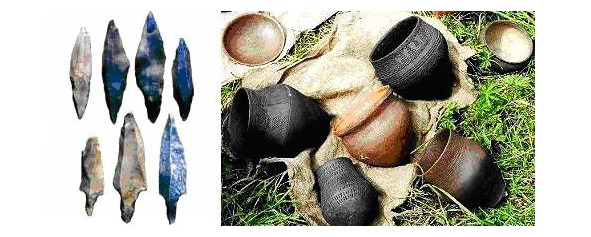
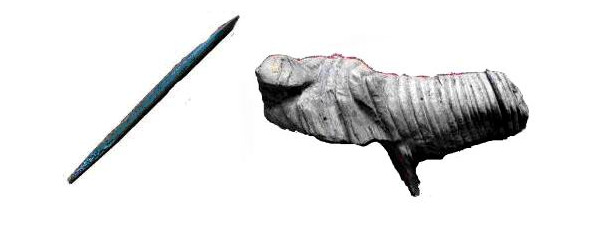
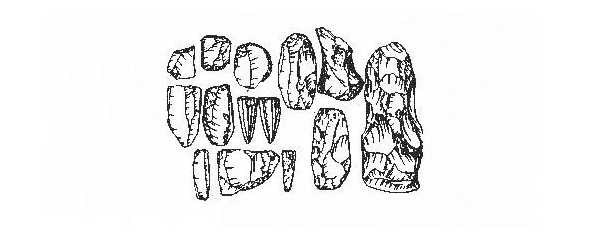
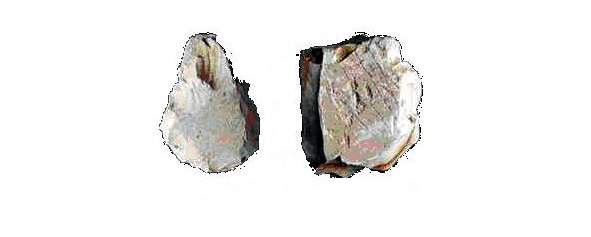
In general, the Mesolithic era differed from the Paleolithic exceptional mobility of the population. So already in 7 thousand BC according to modern anthropologists based on the study of the bone remains of the Oleneostrovsky burial ground, in the region of Lake Onega, a mixture of northern and southern Caucasoids took place.
Significant advancement of the North European population to the south at the turn of the Mesolithic and Neolithic eras is evidenced by the data cited by D. I. Telegin. Comparing the burial rite of the north and south of Eastern Europe, he notes that for the northern latitudes, already from the Paleolithic, the burial of the dead in an elongated position on the back, in contrast to those crouched in the south. So all the skeletons of Sungir (24 thousand BC) lay on their backs in an elongated position. In the Mesolithic Oleneostrovsk burial ground (7 thousand BC) on Lake Onega there are 118 burials elongated on the back, and only 14 on the side. In the burials of the Popovo burial ground (on Lake Lache, the right bank of the Kinem River) of the second half of 7 thousand BC all the dead lay in an extended position on their backs.
D. Ya. Telegin notes what if for the south of Eastern Europe throughout the Mesolithic era the dominant position in the burials was a position crouched on its side, then, during the transition to Neolithic time, a sharp change is noticed in the burial rite, «when the elongated back position becomes prevailing in the position of skeletons throughout the study area. He’s writing: «It seems to us that the reasons for such dramatic changes in the funeral ritual of the population of Eastern Europe on the verge of eras should be sought, firstly, in changing the composition of the population itself, and secondly, in changing his ideology. Moreover, at different times, these factors played, obviously, far from the same role: during the transition from the Mesolithic to the Neolithic, the first factor probably prevailed (i.e., population change.) … So, according to the definition of anthropologists, the Mesolithic population of Ukraine, who left the Voloshsky-Vasilievsky-type burial grounds with burials buried on their sides, belongs to the Mediterranean race, while the Neolithic tribes who replaced it are characterized by all the signs of the Late Cro-Magnon type (the so-called subglacial North European type.). It is to these tribes that the numerous burial grounds of the Dnieper-Donetsk culture belong, where the skeletons lay in an extended position in rows. Consequently, a noticeable sharp change in the rite of burial here is associated with a change in population.»
So, in the Dnieper at the boundary of the Mesolithic and Neolithic (at the end of 7 — beginning of 6 thousand BC), a new population comes from the northern regions. At the same time, even in Pechora appear groups that came from the southwest.
More than a hundred sites of the Mesolithic era are open in the Vologda Oblast. S. V. Oshibkina notes that the sites of the Sukhona River basin (Kolupaevskaya on the Staraya Totma River and Yasnopolyanskaya on the tributary of the Sukhona River, Sombol River) existed surrounded by forests of pine (27%), birch (25%), linden (33%), oak (1%), hazel (2%), and the percentage of linden increases over time. S. V. Oshibkina emphasizes that: «As established by M. I. Neishtadt, the period of domination of broad-leaved species and alder falls on 2500 — 7700 years from our days or 5700 — 500 years BC.»
The population of the Kolupaevskaya site lived in rectangular ground dwellings, at least 6 x 6 m. This had a rigid structure. The guns found in the archaeological sites lots of the Sukhona river basin, have an ancient tradition and are associated with the late-Paleolithic witness culture, the origins of which some researchers see in the Late Paleolithic cultures of Poland, Lithuania and Western Belarus, others are in the cultures of the Kostenkovsk-Borshevsky region on the Don. S. V. Oshibkina believes that the typology of the tools, which has been preserved for a long time, has been developed among the population of the Volga-Oka interfluve, the west of the Middle Volga and the Sukhona basin, related by origin. She writes: «Culturally, the Mesolithic of the Sukhona Basin resembles the Volga-Oka Mesolithic, which is explained by the common origin of the population, which is part of a single cultural region and retains witnessing traditions.» It makes sense to recall that part of the Volga-Oka Mesolithic population is considered to have come from the Dnieper and from the banks of the Desna River, while the other part is considered to be descendants of local Late Paleolithic tribes.
S. V. Oshibkina also investigated a number of Mesolithic sites in the Eastern Onega region. So, in the Lower Veretye lot (Lake Lache basin), for example, bows, arrows, spears, moreover, one onion 150 cm long was almost whole. The lifetime of the archaeological sites lot is 8750 +70 years to the present day, i.e.
first third of 7 thousand BC. S.V. Oshibkina notes that: «the technical methods of processing raw materials are diverse and quite perfect» and «the variety of technical methods in the processing of stone and bone indicate a high level of cultural development». This is not surprising since in the region of Lake Onega there was a significant raw material base of flint tools. And as A. N. Zhuravlev notes, speaking of the various flint sites found on the southern coast and in the Vytegra River region: «The presence or absence of stone species suitable for the manufacture of tools, to a large extent determined the level of development of the industry and the degree of perfection of stone tools. Raw stone was not only an important prerequisite for the development of new areas by people, but also determined the degree of development of mining and the nature of primitive exchange.»
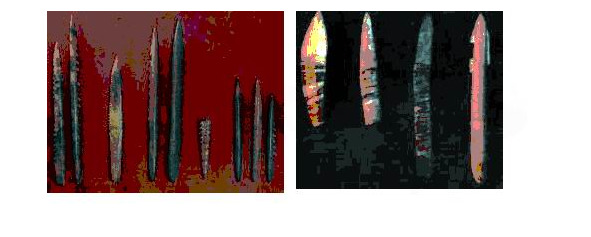

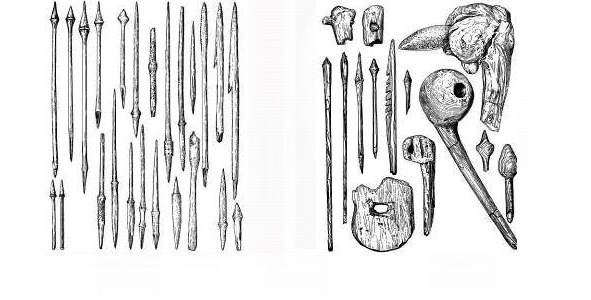
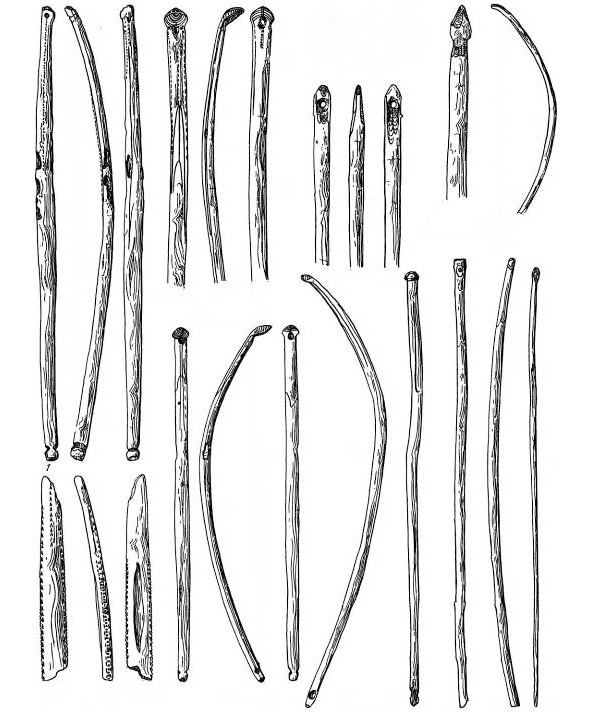
Speaking about sites like Veretya, S.V. Oshibkina notes that the population settled in the zone of pine-birch forests, mainly along the shores of large lakes, hunted large meat animals — moose, reindeer, as well as beaver and poultry -mainly swans. Thus, as in the archaeological sites lots of the Sukhona basin, the population of the archaeological sites lots of the Eastern Onega region hunted mainly for moose, the second most important place was occupied by a beaver, of the birds they were waterfowl — ducks, gray geese, whooper swans, and loons.
Like the Mesolithic of the Sukhona basin, the Mesolithic of the basin of Lake Onega and Karelia, some researchers associate with the Volga-Oka cultures.
So, V. F. Filatova believes that: «the Yaroslavl-Kostroma current of the Volga and further south to the lower reaches of the Oka seems to be the most probable region from which the population could enter the basin of Lake Onega.» Analyzing the materials of the archaeological sites areas of the Eastern Onega region, S. V.
Oshibkina concludes that: «The Lower Veretier I finds the greatest resemblance to the materials of the German site Hosn Fieheln and some Danish sites».
In the early 50s, active archaeological research began in the basin of the Northern Dvina, Vychegda and Pechora. A number of Mesolithic sites were opened here. One of the most interesting is the archaeological sites lot Vis I, opened by G. M. Burov. Her age is the last quarter of 7 thousand BC. Wood products, objects from bark and wicker from grassy plants were well preserved on Vis I: 31 onions, arrow shafts, a baton, skis, sled runners, the remains of nets and floats were found. The bows-self-arrows of the Visa settlement are huge, their length is 348, 267, 255 cm.
Some types of bows have analogies among the finds in the West European sites of the Stone Age and the Bronze Age.In the basin of the Northern Dvina, in its upper reaches, V. I. Kanivets and I. V. Vereshchagina opened a number of Mesolithic sites, the inventory of which resembles the materials of the Vychegda and Sukhona sites. And, finally, in the extreme northeast of the European part of the USSR, the Mesolithic sites of 7—6 thousand BC known in the Middle Pechora, on its left tributary Izhma, on the river Usa, Adzva, Kolva. S. V. Oshibkina believes that the inventory of the Turunnyur site on the Izhma River is comparable to the Vychegda sites and the monuments of the Sukhona basin. She writes: «There are a number of hypotheses about the settlement of the North-East of the European part of the USSR, including the arrival of the population in the Mesolithic from the south-west, from the Volga-Oka and Baltic-Dnieper regions. It is believed that the wave of this settlement reached Middle Pechora.» This assumption seems more than logical.
As G. Child wrote: «In boreal times, people of forest cultures spread, starting from Southern England and ending with Finland, throughout the entire North European plain, which has not lost its monotonous character… People perfectly adapted to the natural environment, consisting of pine forests, the monotony of which was broken only by rivers and lakes. «Thus, I would like to emphasize once again that a number of researchers consider the Mesolithic population of the north of Eastern Europe to be genetically related to the residents of the Mesolithic Volga-Oka and Baltic-Dnieper regions and the local Late Paleolithic population.
The complex spiritual life, the developed mythological and poetic notions, rites and rituals of people who lived in the north of the European part of our Motherland are evidenced by the sites and burial grounds of that distant time. It is there, in the depths of millennia, that one must look for the origins of many mysterious and incomprehensible folk rites, images of folk tales, songs, conspiracies and tributes, arts and crafts, etc.
Of exceptional interest in this regard is the Popovo burial ground discovered by S. V. Oshibkina in the Kargopol district of the Arkhangelsk region, which dates back to the second half of 7 thousand BC.
Much of what was still characteristic of the Upper Paleolithic burials of Sungiri (24 thousand BC) remains a living tradition even after 17 millennia in the Popovo burial ground. All buried here lie in the «elongated on the back» position, like 17 millennia ago; the graves were covered with hot coals and red ocher, purifying the dead from corruption and returning them to a new life. But, in comparison with the ancient Stone Age, something new appears here in the Mesolithic burial ground. So all the buried were accompanied by a very specific set of animals: elk, beaver, bird (usually waterfowl: goose, swan, and duck). Dog bones or decorations from its fangs are very common. You can recall that already in Sungiri headdresses were decorated with fangs of arctic foxes, but here, in Popovo, the dog has a special role. This was most clearly manifested in the burial of a boy of 7—9 years old, where near the left hand of the deceased lay the skeletons of two dogs, an adult and a young one. S. V. Oshibkina notes that all the items accompanying the boy were broken, which was probably done on purpose. They were laid in a shallow pit, lightly sprinkled with earth, and then killed dogs were put on top. Interestingly, in the cultural layer left by the Mesolithic site, there are bones of a number of animals that are absent in grave pits. So the ancient inhabitants of Popovo hunted moose, reindeer, bear, hare, but there are no bones of reindeer, bear and hare in the graves. At the same time, elk bones in ritual pits prevail, and dog bones are found in burials much more often than in the cultural layer of sites.
Probably, here we are dealing with a «well-established and quite complex funeral rite» in which «the dog was assigned a certain important role.» Running a little ahead note in the hymns of the Rig Veda the oldest cultural monument of the Indo-European peoples, the addition of which is attributed to 5—4 thousand BC, the companions of the god of death Yama were two dogs — an old and a young one.
S. V. Oshibkina notes that the tools found in the Popovo burial ground are similar to the products of the early Mesolithic of Lithuania and came into use even in the Paleolithic. In the Mesolithic, they are also distributed in Poland, on the Desna and are somewhat less common on the Upper and Middle Volga.
It was previously noted that archaeologists consider it possible to assume already in the Paleolithic a genetic link between the populations of the Dnieper, Don and North Eastern Europe. M. D. Gvozdover, analyzing the ornament of stone and bone products from the Upper Paleolithic site of Kostenk on the Don, emphasizes, as the main one, the motive of an oblique cross and considers that:
«the nature of the arrangement of the elements of the ornament and their choice are not due to technological reasons, but to the cultural tradition.» S. V. Oshibkina, speaking about the ornament of the objects of the Lower Veretye I site, marks as a characteristic mark on products made of horn and woods an oblique cross or a group of oblique crosses. It is interesting that on a knife from the Lower Spindle this sign was placed near the hilt itself, covered with resin and wrapped in birch bark. The same signs are placed on the arrowheads. S. V. Oshibkina suggests that these may be signs of the master (which is very doubtful) or security signs (which is hard to disagree with). It should be noted that slanting crosses and groups of them are also present on objects found by G. M. Burov in the archaeological sites lot Vis I, dating to the end of 7 — the end of 6 thousand BC. We have already emphasized that the peculiarity of this archaeological sites in the basin of the North. Dvina is a good preservation of Mesolithic wood products, bark and plant fibers. Many wooden objects from the 1st Visa peat bog are decorated with zigzag ornaments, an oblique grid of crosses and parallel lines.
The Oleneostrovsk Mesolithic burial ground (late 6th — early 5th millennium BC) located on South Oleny Island, on Lake Onega, is extremely interesting in terms of the formation of cultural traditions, worship and rites. Here 174 burials were revealed, of which 118 were elongated on the back. 11 on its side, 5 crouched and 5 vertical. It is interesting that the variety of types of burials corresponds to the conclusions of anthropologists that the mixing of northern and southern Caucasians was going on here.
Really, from the most ancient Paleolithic times, the position of the deceased in the «elongated on the back» position, which was typical of the north of the European part of our Motherland, adjoins in the Oleneostrovsk burial ground with the cramped burial, classical for the south of Eastern Europe at that time.
Most of the burials of the Oleneostrovsk burial ground were accompanied by a rich inventory. All the dead were bombarded with red ocher, and the richer the burial, the greater was the sprinkling of ocher. There were numerous pendants made from moose incisors (4372 pieces), plates from beaver incisors (1155 pieces), which were sewn onto the headpiece, made up belts and chest decorations. A lot of bone tools — arrowheads, harpoons, daggers were decorated with rifled patterns in the form of rows of oblique crosses and zigzags. Objects made of wood, bone and horns are widely represented in the Oleneostrovsk burial ground: elk heads, figures of people and snakes.
So the headdress of the buried here, accompanied by two women, the men were decorated with wooden bolts, ending with carved moose heads. Similar rods were found in the Northern Urals in the Shigirsk peat bog.
B. A. Rybakov, exploring the symbolism of the Oleneostrovsk burial ground, turned to archaic folklore, the most fully preserved among hunters of Siberia. As an analogy to the ideas of the Mesolithic inhabitants of the coast of Lake Onega, he cites Evenki legends about the cosmic moose, identified with the constellation Ursa Major, and about two half-female hemispheres — the mothers of the Universe. Thus, the attitude towards the elk as a sacrificial, sacred, ritual animal is already being revealed at the level of the North-East European Mesolithic. He is constant in burial grounds as an accompanying victim, his images are frequent in burial grounds and in settlements, to the point that even the skis found in the settlement of Vis I have protrusions in the form of elk heads.
Moreover, these protrusions had not only aesthetic or cult, but also practical significance, playing the role of a brake and a stabilizer.
A piece of ski with a sculptural image of an elk at the end was also found in the Lower Veretye settlement.
Karelia People living in the north of Eastern Europe during the Mesolithic, created their mythology, their cults and their rites, a significant part of which was preserved in the North Russian folk tradition up to the 20th century, considered sacred or, in any case, singled out from the whole animal world, the elk, beaver, swan or goose and the dog that surrounded them, were, according to the definition of I. I. Gokhman, «Caucasians with clearly defined racial characteristics.» They"are tall (170 cm. or more), anthropologically similar to the population represented in the Mesolithic of Latvia and partly Ukraine,» and people identified as pure Caucasians were buried in the Popovo burial ground without any signs of Mongoloidity.
S. V. Oshibkina believes that the cultural traditions of this region are rooted in the Paleolithic of Eastern Europe and represent one of the oldest ethno-cultural formations of the Caucasian population. And moreover: «Archaeological material allows us to state that in the Mesolithic of the north of the European part of the USSR there are no traces of any influence of the Ural cultures,» and the population of the forest zone during this period (including in Sukhona) «should be considered Caucasian». This conclusion is of great interest to us, as until now, the opinion was widespread according to which the indigenous population of the north of the European part of our country since ancient times and until the arrival of the Slavs in the middle — end of 1 thousand BC consisted of representatives of the Ural race.
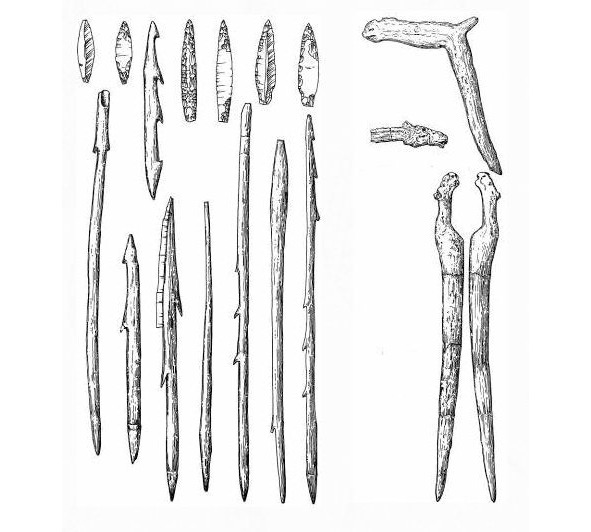
The hypothesis of the population of the north of the European part of the USSR by the population of Ural origin belongs to A. Ya. Bryusov. He believed that after the retreat of the glacier, which covered the entire north of Eastern Europe, the excess population from the Urals moved to the territory freed from ice.
But, as we know today, the glacier did not cover the not so significant territories of the north, as previously assumed. In addition, as S. V. Oshibkina notes: «The Mesolithic of the Urals has been actively studied recently, new materials have been obtained that allow us to confidently say that there have been no significant migrations from the Urals to the north of the European part of the USSR in the Mesolithic.»
A huge role in solving the issue of the most ancient population of the European north of our homeland is played by modern anthropological data. So A.
G. Kozintsev concluded on a single anthropological basis on which the Uralic language family was formed and which is most pronounced among the Yukagirs.
Noting that according to linguistics, the Yukagir language is the oldest representative of the Ural family, A. G. Kozintsev emphasizes that the Mongoloidness of peoples speaking the languages of this family is completely special, specifically «Yukagir». In addition, the «Ural-speaking peoples, sharply differing in the degree of Caucasoid and Mongoloid, nevertheless, for the most part they are opposed to both large races, I find a distinctly „northern“ tendency that finds maximum expression among the Yukagirs.»
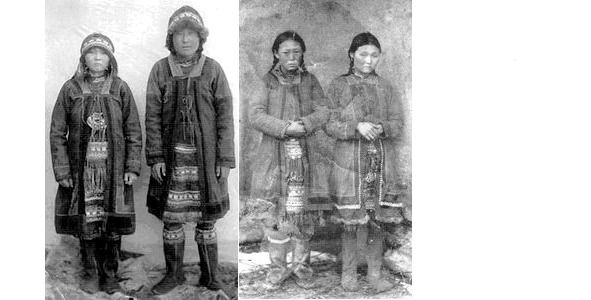
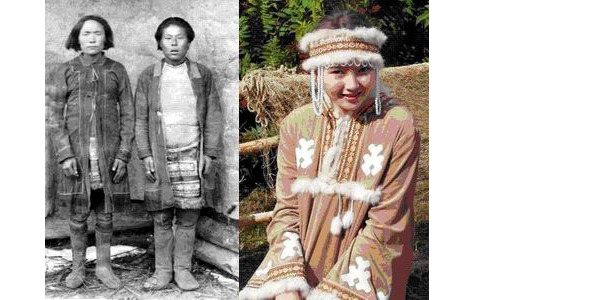
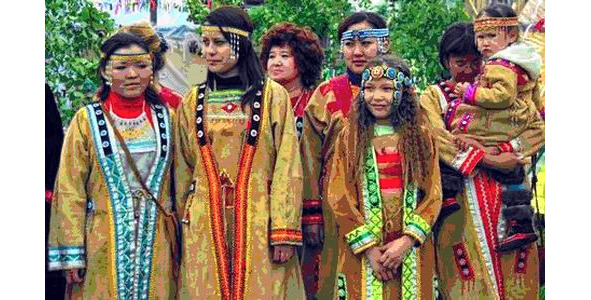
The territory of the formation of the peoples of the Uralic language family is defined as the north of Western Siberia and the Trans-Urals. By the Mesolithic era (10 — 7 thousand BC), racial trunks had completely formed, and if the original population of the north of Eastern Europe really came from behind the Urals, then it would have been inherent in that «Yukagir» Mongoloid, which in that all Finno-Ugric peoples have some measure, starting with the Khanty and Mansi and ending with the Finns, Estonians and Hungarians. However, this is not.
The population of the European North of the Mesolithic is absolutely Caucasoid. Regarding a somewhat broad and flat face, characteristic of the part of the Mesolithic and Paleolithic population of the north of Eastern Europe, then these anthropological features are not genetically related to the Mongoloids.
Such a broad-faced anthropological type was widespread in Europe, meeting in the Mesolithic of Ukraine, on the Dnieper nadporozhye and on the shore of the Sea of Azov. A similar type was found in the Mesolithic of Yugoslavia, the Neolithic and Eneolithic of Czechoslovakia. I. I. Gokhman believes that these local groups «genetically descend from the Upper Paleolithic population, which formed in the northern subglacial zone. These populations make up the core of northern Caucasians, although on most sites they are mixed with southern Caucasians. «In recent years, data have appeared on the similarity of the Eastern European Mesolithic and Neolithic series of skulls with the Mesolithic of Northern France, Denmark and Southern Sweden. A. A. Formozov believes that the Upper Paleolithic and Mesolithic of Eastern Europe in general were characterized by population relocation from the west, southwest, and south to north and northeast, and not vice versa. I. I. Gokhman believes that perhaps it was during this period in the Urals and Trans-Urals that groups of light-colored Caucasians began to penetrate from the territory of northern Eastern Europe, to which the modern population of the Trans-Ural regions owes pigmentation brightening. Thus, the idea of A. Ya. Bryusov that the Mesolithic of the Urals served as a source for the settlement of the entire north of Europe up to the Baltic States in the postglacial period was not confirmed, and the Mesolithic population of the north of Eastern Europe was, apparently, Indo-European, and not Finno-Ugric.
Speaking of the migrations of human groups in Eastern Europe during the Paleolithic and Mesolithic, a number of very important factors should be emphasized. So, during the Mikulinsk interglacial period 130—70 thousand years ago, it was in the north of Eastern Europe that the climatic conditions were optimal for human life. Warm summer without sweltering heat mild winters, when the average winter temperatures at the latitude of Naryan-Mar were -3.5ºС, unlike modern -14.5° С. This climate, similar to the modern climate of the Atlantic areas of Western Europe, Southern France or Northern Spain, was supplemented by a very important factor absent in the aforementioned Western European regions-long summer daylight contributing to faster growth and development of both plants and animals.
Бесплатный фрагмент закончился.
Купите книгу, чтобы продолжить чтение.